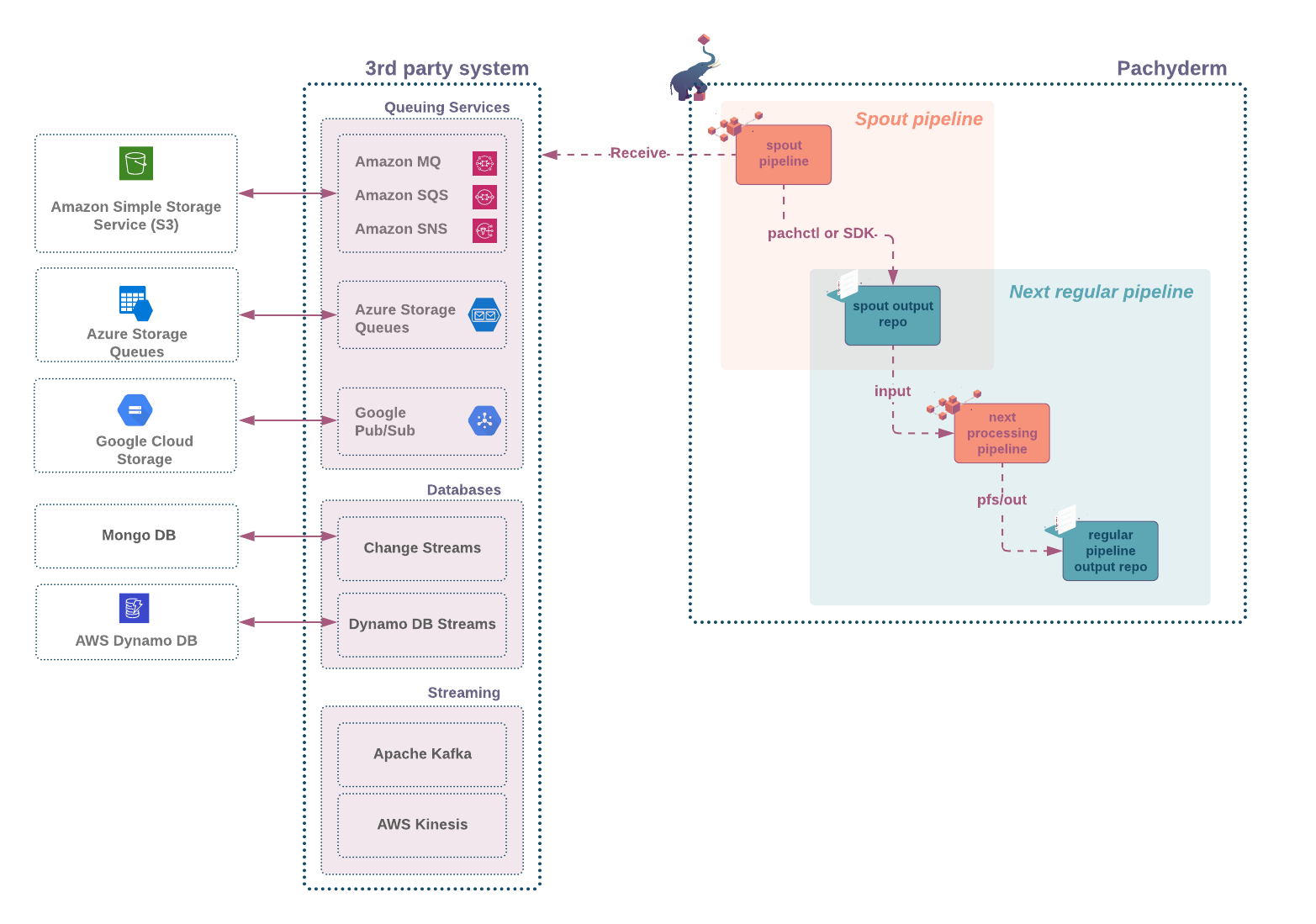A spout is a type of pipeline that ingests streaming data from an outside source (message queue, database transactions logs, event notifications… ) as schematized in the diagram below.

Generally, spout pipelines are ideal for situations when the frequency of new incoming data is sporadic, and the latency requirement to start the processing is short.
In these workloads, a regular pipeline with a cron input that polls for new data at a consistent time interval might not be an optimal solution.
A spout pipeline differs from regular pipelines in many ways:
- its code runs continuously, waiting for new events.
- it does not take an input repo. Instead, it consumes data from an outside source.
- the pipeline’s output repo,
pfs/outis not directly accessible. To write into the output repo, you will need to use theput fileAPI call via any of the following:- the CLI (
pachctl put file) - one of the Pachyderm’s SDKs (for golang or Python )
- or your own API client.
- the CLI (
- Pachyderm CLI (
pachctl) is packaged in the base image of your spout as well as your authentication information. As a result, the authentication is seamless when usingpachctl.
Support for a transparent authentication in our SDKs is coming soon. In the meantime, check our Spout 101 example at the end of this page to learn how to retrieve and inject your authentication token into your API client.
To create a spout pipeline, you will need:
- A source of streaming data.
- A Docker container with your spout code that connects to, reads, transforms, and pushes data from the data source to your output repo.
- A spout pipeline specification file that uses your container.
It is important
to remember that you will
need to use a put file API call
from a client of your choice
to push your data
into the pipeline output repository.
Having the entire Pachyderm API
available to you
allows you to package data
into commits and transactions
at the granularity your problem requires.
A minimum spout specification must include the following parameters in the pipeline specification:
| Parameter | Description |
|---|---|
name | The name of your data pipeline and the output repository. You can set an arbitrary name that is meaningful to the code you want to run. |
spout | This attribute can be left empty. Optional: Add a service field to expose your spout as a service. |
transform | Specifies the command that you want to call to ingest your data and the Docker image it is packaged in. |
xs Here is an example of a minimum spout pipeline specification:
The env property is an optional argument.
You can define your data stream source
from within the container
in which you run
your script.
For simplicity, in this example,
env specifies the
source of the Kafka host.
{
"pipeline": {
"name": "my-spout"
},
"spout": {
},
"transform": {
"cmd": [ "go", "run", "./main.go" ],
"image": "myaccount/myimage:0.1",
"env": {
"HOST": "kafkahost",
"TOPIC": "mytopic",
"PORT": "9092"
}
}
}Example #
For a first overview of how spouts work, see our spout101 example.
